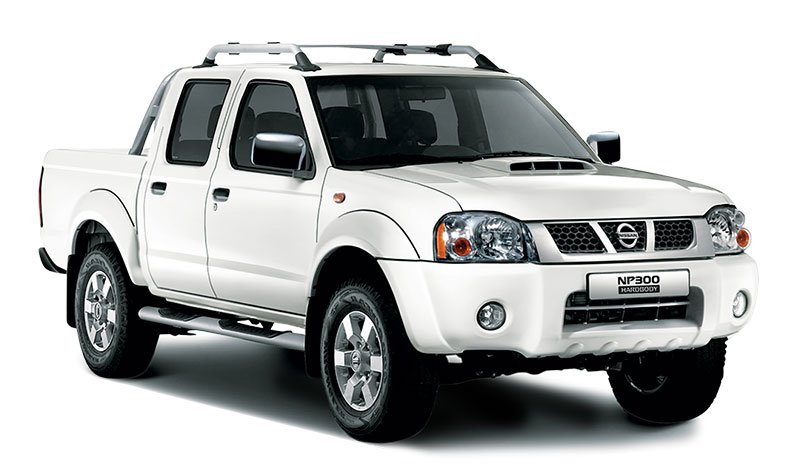1. Introduction: Why the Hardbody Matters
The Nissan Hardbody (D21) represents a golden era of compact trucks—when vehicles were built for function over form, yet somehow achieved both. Unlike today’s bloated, tech-laden pickups, the Hardbody offered:
-
True mechanical simplicity (easy to work on, hard to break)
-
Legitimate durability (many still running strong at 300,000+ miles)
-
Unpretentious styling (clean lines that aged beautifully)
This guide explores why this truck developed such a cult following and why it’s experiencing a renaissance today.
2. Historical Context and Development
The Pre-Hardbody Era (1970s-1985)
-
Nissan’s 720 series established the brand in the U.S. truck market
-
Needed a more modern competitor to the Toyota Pickup and Isuzu P’up
-
Design goals: Improved payload capacity, better fuel efficiency, and enhanced toughness
The “Hardbody” Philosophy
-
Name derived from the double-wall cargo bed construction
-
Designed to withstand construction site abuse and off-road punishment
-
Debuted in 1985 for the 1986 model year
3. Generational Breakdown (1986-1997)
First Generation (1986-1989)
-
Exterior: Round headlights, chrome bumpers, angular body lines
-
Key Features:
-
Solid front axle (4×4 models)
-
Carbureted engines (early models)
-
Available in Standard Cab and King Cab configurations
-
-
Special Editions:
-
SE V6 – First performance-oriented trim
-
Desert Runner – 2WD off-road package
-
Second Generation (1990-1997)
-
Exterior: Square headlights, flush bumper design
-
Key Updates:
-
Fuel injection standard
-
Independent front suspension (4×4 models)
-
Airbags added (1993+)
-
VG30i V6 upgrade (160 HP)
-
-
Notable Trims:
-
XE – Luxury package with power amenities
-
4×4 XE-V6 – Top-tier off-road model
-
4. Engine and Drivetrain Specifications
| Engine | Type | Power | Torque | Years | Notes |
|---|---|---|---|---|---|
| Z24i | 2.4L I4 | 103 HP | 132 lb-ft | 1986-1989 | Carbureted, bulletproof |
| KA24E | 2.4L I4 | 134 HP | 154 lb-ft | 1990-1997 | Single cam, timing chain issues |
| VG30i | 3.0L V6 | 153 HP | 180 lb-ft | 1990-1993 | First V6 option |
| VG30E | 3.0L V6 | 160 HP | 182 lb-ft | 1994-1997 | Upgraded fuel injection |
Transmission Options:
-
5-speed manual (most desirable)
-
4-speed automatic (adequate but sluggish)
5. Off-Road Capabilities and 4×4 Systems
First-Gen 4×4 (1986-1989)
-
Solid front axle (Dana 44 equivalent)
-
Manual locking hubs
-
Part-time 4WD with 2-speed transfer case
-
Approach/departure angles superior to modern trucks
Second-Gen 4×4 (1990-1997)
-
Independent front suspension (better on-road, worse for extreme off-roading)
-
Automatic hubs available
-
Limited-slip differential optional
Aftermarket Support
-
Lift kits readily available (2-6″)
-
Armor upgrades (bumpers, skid plates)
-
Engine swaps (common: VQ35, LS, Cummins R2.8)
6. Cultural Impact and Motorsport Heritage
Racing Pedigree
-
SCORE International Baja 1000 – Multiple class wins in 1980s/90s
-
Stadium Super Trucks – Early precursor vehicles
-
Drift Truck Scene – Lightweight + RWD = perfect drift platform
Pop Culture Appearances
-
Featured in “Breaking Bad” (Walter White’s truck)
-
Appeared in “RoboCop 2” as a futuristic police vehicle
-
Hip-hop culture icon (90s lowrider truck scene)
7. The Modern Hardbody Scene
Current Market Trends
-
Clean stock examples: $8,000-$20,000
-
Modified builds: $15,000-$40,000
-
Ultra-rare models: JDM diesels, single-cab short beds
Enthusiast Communities
-
Facebook Groups: “Nissan Hardbody/D21 Owners”
-
Forums: NicoClub, Infamous Nissan
-
YouTube Builds: “D21 Overlanding” channels booming
8. Buyer’s Guide: What to Look For
Common Issues
-
Rust: Frame rails, cab corners, bed supports
-
Timing chain guides (KA24 engines)
-
Automatic transmission wear (avoid if neglected)
-
Front suspension wear (ball joints, bushings)
Inspection Checklist
-
Frame integrity (tap with hammer, listen for rot)
-
Engine compression test
-
4×4 system operation (test in dirt if possible)
-
Service history (look for timing chain records)
9. Restoration and Modification Potential
Restoration Tips
-
OEM parts sources: Courtesy Nissan, RockAuto
-
Aftermarket support: Still strong for body panels
-
Paint codes: Original “Hardbody Red” highly sought
Popular Modifications
| Modification Type | Examples | Cost Range |
|---|---|---|
| Performance | VG33ER swap, turbo KA24 | $3,000-$10,000 |
| Suspension | 4″ lift, long-travel kit | $1,500-$5,000 |
| Exterior | Steel bumpers, LED light bars | $500-$3,000 |
| Interior | Retro sound system, seat swaps | $1,000-$4,000 |
10. Future Collectibility and Market Trends
Why Values Are Rising
-
Last of the simple, mechanical trucks
-
Gen X nostalgia factor kicking in
-
Overlanding boom creating demand for small, capable trucks
Investment Potential
-
Top candidates for appreciation:
-
Low-mileage 4×4 V6 models
-
Single cab short beds
-
Japanese-market diesels
-
-
Projection: 20-30% value increase over next 5 years
Final Verdict
The Nissan Hardbody occupies a sweet spot in automotive history—tough enough for worksites, simple enough for home mechanics, and stylish enough for collectors. As modern trucks become increasingly complex and expensive, the D21’s star continues to rise.







